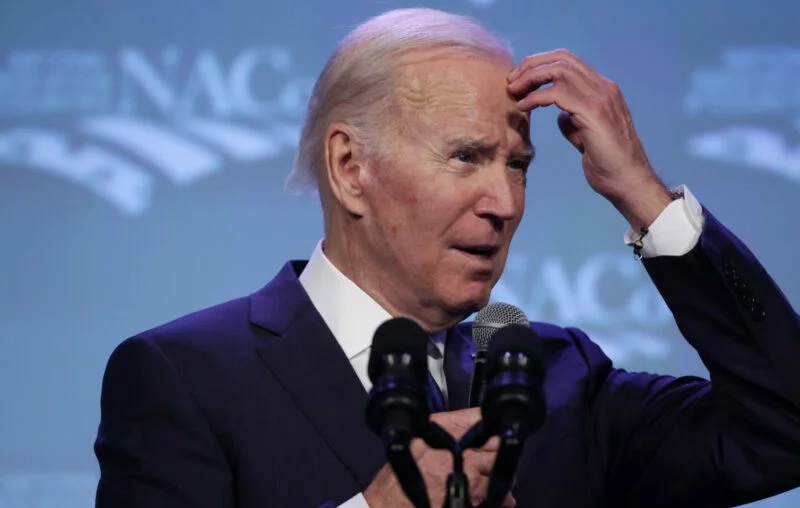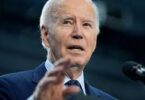Michael N. Peterson
“I will make no apologies that we are investing to make America strong. Investing in American innovation, in industries that will define the future, and that China’s government is intent on dominating,” said President Joe Biden at his State of the Union address earlier this month. For a President who campaigned as the antithesis to Trump, I can’t think of a better quote reflecting both politicians’ mutual visions of a protectionist America.
Whereas Trump sought to revitalize America’s decaying manufacturing sector under the banner of national conservatism, Biden seeks to do the same but for the purposes of promoting labor and environmental standards. As James Bacchus notes, Biden is engaging in “polite protectionism,” trade policy that is equally restrictive but with a genteel attitude.
Since taking office, the Biden administration has already poured hundreds of billions into propping up the domestic production of semiconductors, electric vehicles, heat pumps, batteries, and yes, even electric stoves and appliances. The Left hopes that by stimulating these industries, America will be economically self-sufficient while fighting climate change.
But Biden’s industrial push will swiftly undermine his party’s lofty goals, leaving the rest of us to mend a broken economy. Just as Trump’s protectionist policies hurt American consumers, Biden’s turn at bat will be as harmful, if not more so, to the American economy.
When Japan began subsidizing its own high-tech industries in the late 1970s, a new wing within the Democratic Party, the “New Democrats” as they were called, advocated for policy that would, they believed, boost domestic industry to prevent Japan and other fast-growing nations like China and West Germany from outstripping America’s industrial edge.
In their 1982 manifesto, these New Democrats argued that Reagan’s emphasis on military spending should be redirected to domestic industry. Fears of low employment and economic obsolescence in a globalized age fueled efforts to implement stronger industrial policy.
What governments really needed to do, they believed, was identify emerging industries with boatloads of potential and then pump government money into them. But how can government trade officials, or any individual or small group of industry leaders for that matter, possibly have all the information to effectively control an economy as complex as ours? The challenges that plagued protectionist democrats in the 1980s are the same for those who agitate for an “America first” agenda today.
Contrary to the grim fears of the New Democrats in the eighties, American manufacturing climbed, reaching its peak in 1990. In fact, US employment rose by almost 19 million between 1980 and 1990. If anything, employment and economic prosperity grew despite industrial nudging, not because of it.
The market forces so derided by protectionist supporters like President Biden are the very features that generate economic growth. Without markets free from government meddling, there’s simply no way individuals, let alone enlightened trade officials, can allocate resources to industries with the highest potential to satisfy consumer needs.
Even if planning agencies could identify “sunrise industries,” American producers are still unlikely to compete against more creative, efficient foreign firms. During the Obama administration, ambitious attempts were made to invigorate American solar manufacturing. Those attempts quickly failed.
As part of Obama’s Recovery and Reinvestment Act in 2009, for example, the government provided a loan guarantee of $535 million to Solyndra, Inc., an American firm that was championed as the next big producer of high-quality commercial solar panels. “It is time to rev up the American innovation machine and reclaim our lead on clean energy,” said former US Secretary of Energy Steven Chu. Sound familiar?
Two years later, in August 2011, after struggling to remain afloat, Solyndra filed for bankruptcy. How could the government, you might ask, fail so egregiously? As with most cases of industrial planning, politics and knowledge problems severely limited the ability of the Obama administration to spearhead industrial development. The same applies to Biden’s industrial initiative.
Political gamesmanship is another consequence of the government attempting to design the future of American industry. One report cites that over a 15-year span, two-thirds of federal subsidies and tax credits went to the largest American corporations, including Boeing ($13.4B), Intel ($5.9B), Alcoa ($5.6B), and General Motors ($3.7B). Industrial policy requires picking winners and losers, which usually means that incumbent producers benefit at the expense of smaller, more innovative ones. Goliath always wins.
Protectionism also makes goods more expensive. Last year the Commerce Department doubled the tariff on Canadian lumber, increasing the price of lumber almost threefold since the pandemic. According to the National Association of Home Builders, rising costs of lumber are adding $36,000 to new home prices. The last thing we need is more protectionism, especially with inflation staring us in the face and an economy teetering on the edge of recession.
Back in 1981, Senator Joe Biden was closely connected to the biggest players setting the New Democratic agenda. If the past is any indication of the future, this latest rendition of America, Inc. will collapse under its own weight, just as it did thirty years ago. Instead of “building back better,” Biden’s industrial flop will disrupt entrepreneurial activity and hobble the American economy. We should learn the lessons of the past and accept, once and for all, that industrial policy doesn’t work, no matter how much we will it.
Courtesy: aier







